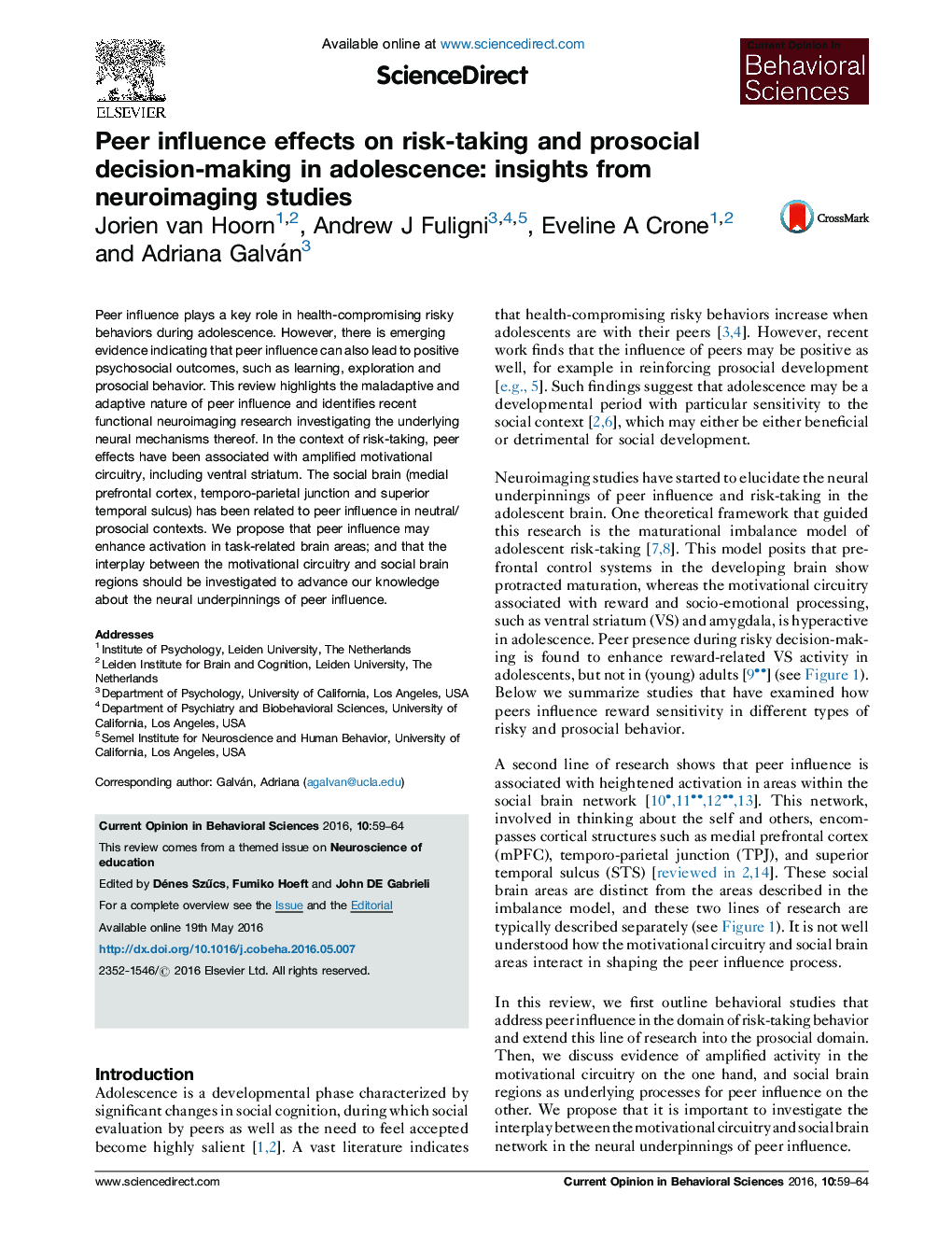| کد مقاله | کد نشریه | سال انتشار | مقاله انگلیسی | نسخه تمام متن |
|---|---|---|---|---|
| 6260360 | 1613080 | 2016 | 6 صفحه PDF | دانلود رایگان |
- Peer influence is adaptive and can promote positive psychosocial outcomes.
- Peer presence elicits greater activation in reward-related areas during risk-taking.
- Peer influence elicits activation of social networks.
Peer influence plays a key role in health-compromising risky behaviors during adolescence. However, there is emerging evidence indicating that peer influence can also lead to positive psychosocial outcomes, such as learning, exploration and prosocial behavior. This review highlights the maladaptive and adaptive nature of peer influence and identifies recent functional neuroimaging research investigating the underlying neural mechanisms thereof. In the context of risk-taking, peer effects have been associated with amplified motivational circuitry, including ventral striatum. The social brain (medial prefrontal cortex, temporo-parietal junction and superior temporal sulcus) has been related to peer influence in neutral/prosocial contexts. We propose that peer influence may enhance activation in task-related brain areas; and that the interplay between the motivational circuitry and social brain regions should be investigated to advance our knowledge about the neural underpinnings of peer influence.
Journal: Current Opinion in Behavioral Sciences - Volume 10, August 2016, Pages 59-64
